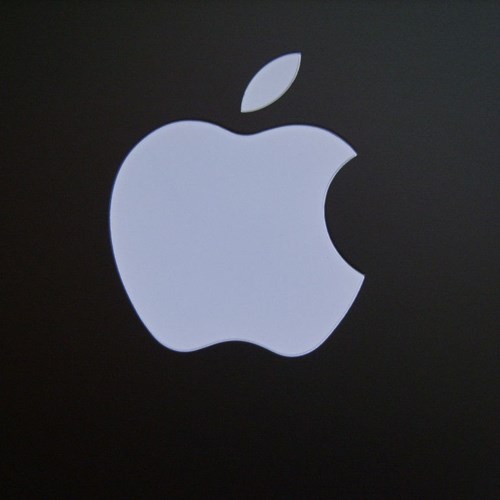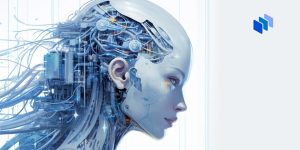There is, perhaps, no company in the world that inspires as much fanatical devotion as Apple. From 2001 to 2011, the company had an unprecedented string of hit products and quickly became one of the strongest firms in all of techdom. But it took a lot of innovations (and some failures) in order for Apple to reach the top. Here we’ll take a look at the history behind this ubiquitous computer company.
A Story of Two Steves
Without a doubt, Apple is the story of Steve Jobs and Steve Wozniak – but not in equal parts. The two started Apple together on April 1, 1976, along with Ronald Wayne, who was brought on to guide his younger associates. However, he’s most famous for selling his stake in Apple well before the company began its meteoric rise, thus missing out on a major fortune – and becoming one of history’s great “what ifs.” The core of Apple, then, was the two Steves, with Wozniak building the machines and Jobs marketing them.
The first "Apple I" was a kit for building a personal computer. Users had to add the keyboard and monitor themselves. However, although the Apple I was targeted solely at the hobby market, it was a big success. At this early stage of PC retailing, there was no business market – or even much of a consumer market. Despite this, the Apple I sold enough units to allow the company to produce the Apple II. This version presented a vast improvement over the Apple I in that it was both more complete and allowed hobbyists to create their own programs – something many did, and shared with other hobbyists. Most importantly, it caught the attention of venture capital. This cash injection allowed Jobs and Wozniak to quit their jobs and begin putting all their time into their new company.
Incorporation, IPOs and a GUI
Apple was officially incorporated in 1977; by 1978, it was making more than $2 million in profit selling the Apple II. The computer had some of the best programs on the market, including the very first spreadsheet program called VisiCalc (a killer app for business people in its day). More importantly, the number of programs – both good and mediocre – numbered in the hundreds. Prior to the Apple II, most all applications on a computer were created by the hardware manufacturer and sold with the hardware. Now, people could buy an Apple II, design their own program and sell it to the hobby market.
But despite its edge over rivals in the range of programs available, Apple was falling behind in terms of hardware. During a December 1979 tour of Xerox PARC labs, Steve Jobs watched a demonstration of Xerox’s new graphical user interface (GUI). This was arguably the most important event in Apple’s early years, as it gave Jobs the idea that would be realized as the Macintosh Mouse. This was the first such device to hit the market, giving Apple the distinction of having launched what is now an indespensible computing device.
Still riding the strength of the Apple II, Apple went public in 1980, making many people instant millionaires. The Apple II continued to carry Apple for several years following its initial public offering, but when the Macintosh was released in 1984, it featured many of the innovations inspired by Xerox.
Clashes and Crashes Remove the Steves
In 1981, Steve Wozniak crashed his private plane and, although he would still be involved with Apple, he no longer played a primary role. Steve Jobs was already considered the driving force behind Apple at the time of the accident, but because of his unorthodox management methods the company’s board was seeking balance.
In 1983, Jobs recruited John Sculley, the marketing genius who saw Pepsi come out on top during the cola wars. Sculley and Jobs reportedly clashed often – largely because the Macintosh saw its market share shrinking as IBM began to take over the computer industry Apple helped create. In 1985, the board chose Sculley over Jobs and Jobs quit Apple rather than accept a lesser role.
Failing by Succeeding Less
Although the period between 1985 and 1997 is often seen as a lost decade for Apple, it wasn’t all failure. Sculley oversaw the success of the original Mac and the introduction of Apple laser printers – an innovation that sometimes gives Apple credit for the desktop publishing industry. Of course, there were some less successful products like the Macintosh Portable and the always-in-production Newton.
In fact, Apple tested many different product lines during this period in an attempt to get out of personal computers. The company was selling computers at a generous margin, but for every Mac sold at a premium, many more inexpensive IBM clones running Windows were flying off the shelves. The result was that, although Apple still made money, it wasn’t growing as fast as other tech firms.
The Path Back to Jobs
After Sculley departed in 1993, leaving many loose ends that would hurt Apple later, Michael Spindler took over. His entire time at Apple (1993-1996) was spent playing defense as IBM clones continued to get better and Windows supplied an OS that was separate from the hardware. This proved to be one of Apple’s weak spots in that it never separated its OS from the Apple hardware. For users, this meant that even if someone wanted the Apple OS, they couldn’t get it without buying a more expensive Apple computer. Moreover, the Macintosh platform as a whole was starting to show its age, so the company began looking for an OS redesign, even as it was seeking to find a competitive product line.
During this period, Apple’s struggles were constantly being compared to the success at Microsoft, despite the fact that one was primarily a PC maker and the other a software company. In 1996, Spindler was replaced by Gil Amelio, who decided to solve Apple’s OS woes by acquiring one that was already considered very stable by the marketplace. To that end, he purchased NeXT, a company founded by none other than Steve Jobs.
During his time away from Apple, Jobs became a billionaire by investing in pre-IPO Pixar, and spent a lot of that developing NeXT computer hardware and outfitting it with a Unix-based GUI. Jobs came back to Apple when it bought out his company and quickly ousted Amelio in 1997 to become the interim CEO.
The iEra
Within a year of being back in the driver’s seat, Jobs set about reviving Apple and picking up some of the product lines it had abandoned. Part of his plan was to recapitalize Apple with money from its biggest rival, Microsoft. Microsoft invested $150 million in Apple, giving Jobs some cash to work with. This also worked out for Microsoft because; by propping up its rival it was able to avoid the anti-trust suits that likely would have emerged from the Justice Department.
Instead of plunging the money into the black hole that Apple’s research and development had become, Jobs cut most of Apple’s operating expenses to focus more money on advertising. This resulted in the launch of the game-changing “Think Different” campaign, along with the aesthetically pleasing iMac.
Apple began to turn PCs into money again, using clever marketing to put the focus back on its powerful and elegant computers. The operating system was also upgraded using technology from NeXT to create Mac OS X. The same OS powered a successful line of laptops branded as iBooks.
When Apple finally left its PC manufacturing roots behind in 2001, it was a true turning point for the company, which underwent a real expansion as a result. The iPod was released and was a smashing success, becoming the best-selling MP3 player. The success of this device also pushed Apple to create the iTunes Store to sell music online – adding a non-tech retail arm that grew as explosively as the iPod division.
The iPod made Apple a heavyweight in digital content and mobile devices. Moreover, the team behind it led to other groundbreaking products for Apple. From 2001 to 2010, Apple released the iPod, iPod Video (2005), iPod Nano (2005), iPhone (2007), iPod Touch (2007), Apple TV (2007), MacBook Air (2008), the App Store in iTunes (2008), iPhone 3GS (2009), the iPhone 4 (2010) and the iPad (2010).
The various mobile devices also took a different approach to software. Instead of buying a traditional software package, installing it on the home PC and transferring the updates to the device, users paid a smaller price for a stripped down version of a program that was optimized for mobile devices – a.k.a. an "app". The App Store was integrated into the iTunes store and quickly grew as designers fell over themselves to create new apps to keep Apple users engaged.
Designing the Future of Content Consumption
The iEra saw Apple bring its standards of elegance and usability to several technology categories. Apple expanded and/or created the market for MP3 players, smartphones and tablets, while still keeping a significant chunk of the computer market. After seeing the iPad 2 to market in 2011, Steve Jobs announced that he was resigning as CEO, but would continue on as the sole chairman of the board. He passed away in October of the same year.
Apple continues to dominate many of its markets, including its iTunes and App stores as well as its physical products. Its focus on elegance and usability has allowed it to maintain a healthier profit margin than many of its competitors, while also creating a legion of devoted fans. More importantly, perhaps, its dominance in mobile devices has allowed Apple to set some of the ground rules for content consumption – including whether users pay for certain types of content (and how much).
The Future of Apple
There will be questions about Apple’s future beyond Jobs and in the years to come, but a string of homerun products has left Apple well-positioned to take the lead in whatever market – or markets – it chooses.






